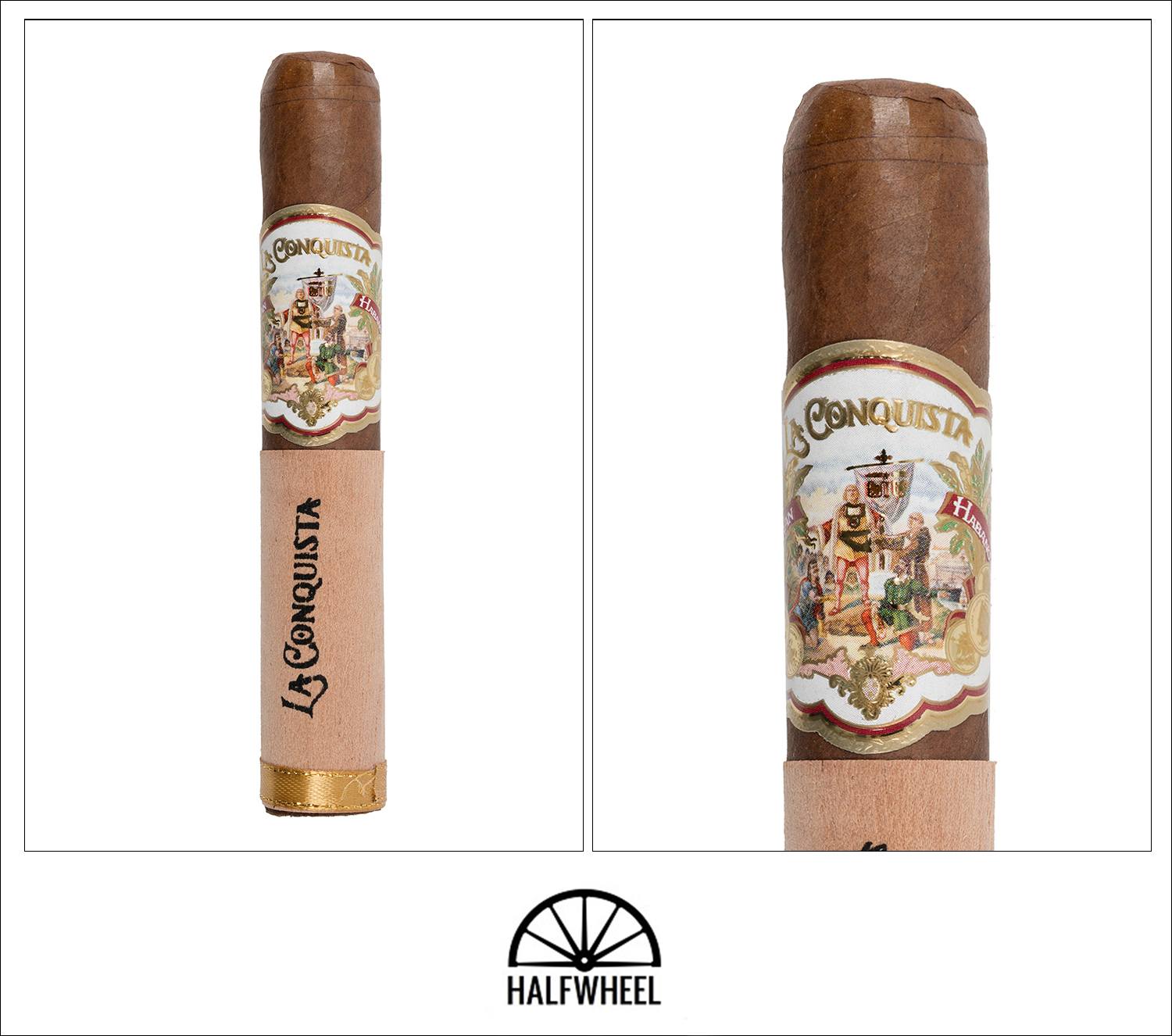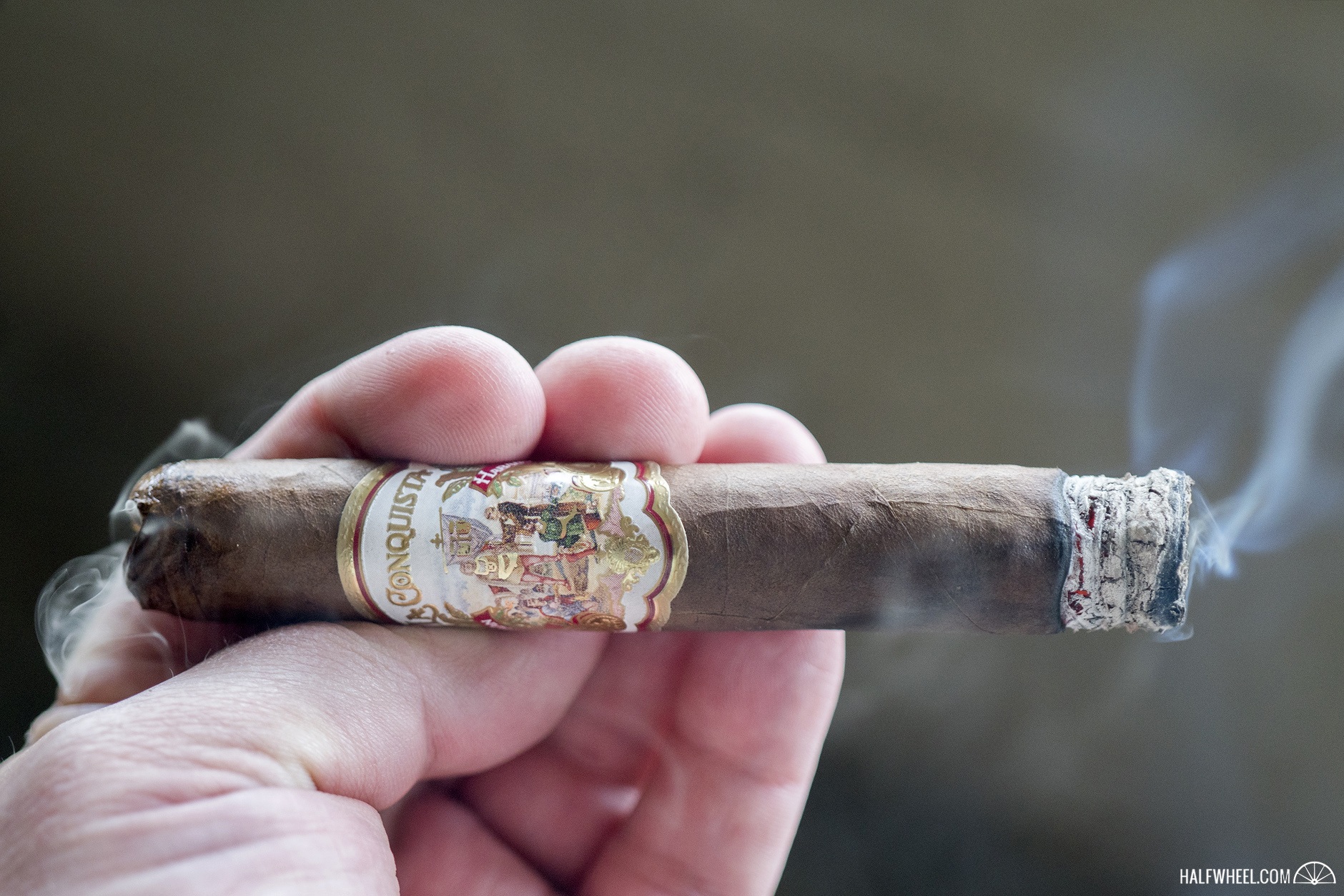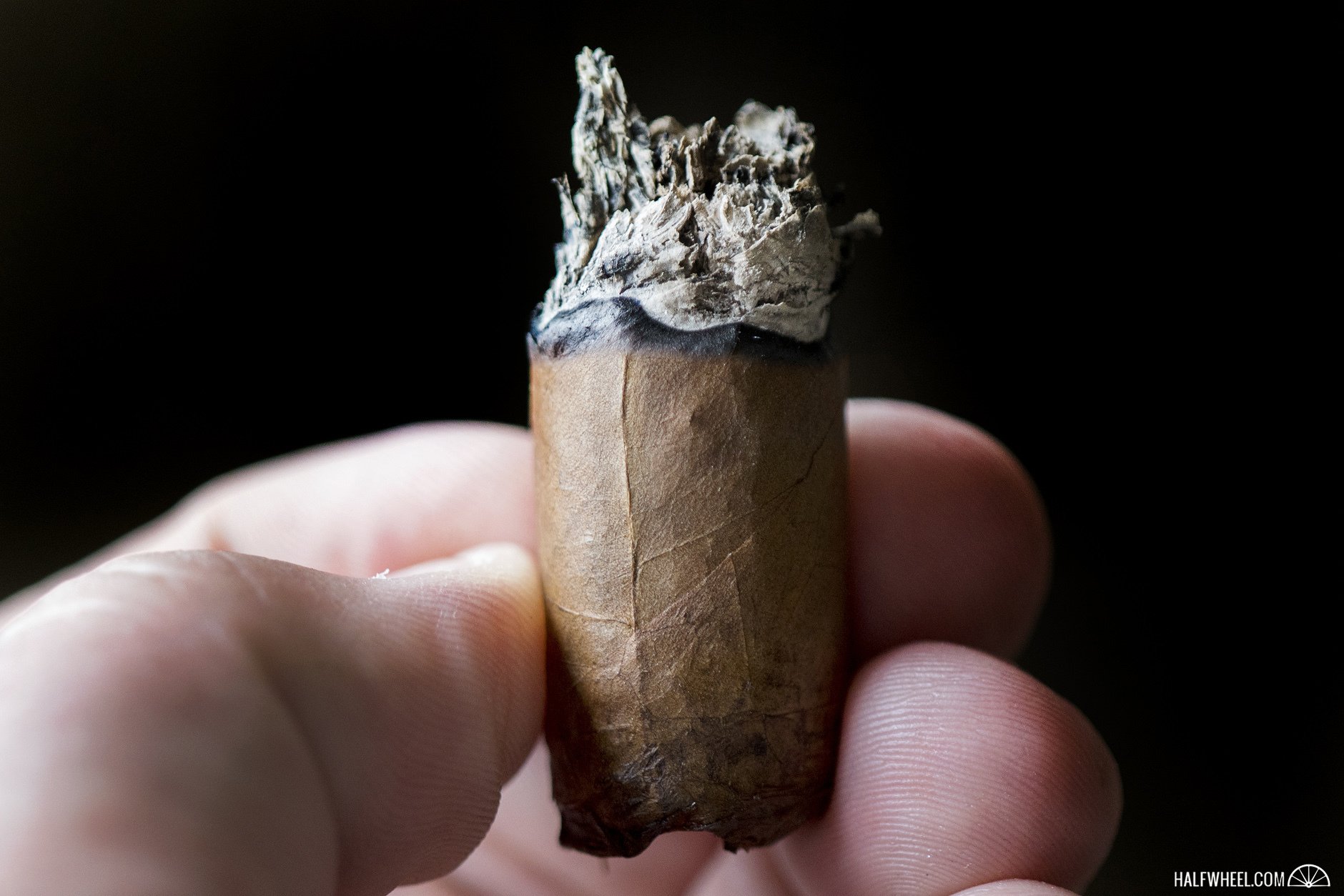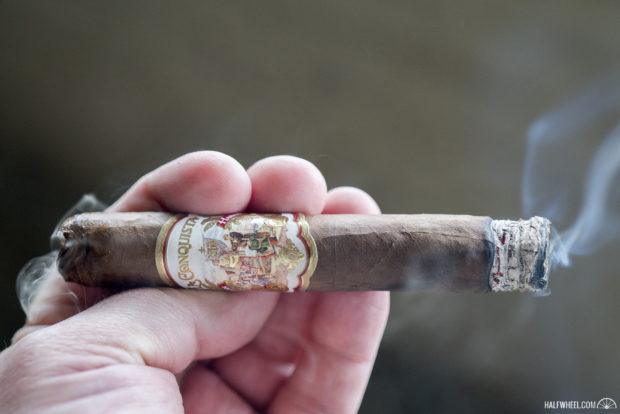Back in 2015, Gran Habano announced a new regular production line named La Conquista, which translates from Spanish to the conquest.
One year later, the company proceeded to send out prerelease versions of the release and began shipping the production versions before the 2016 IPCPR Convention & Trade Show.
Blend-wise, the cigar is covered in a Nicaraguan corojo wrapper and binder as well as filler tobaccos from and Colombia, Costa Rica and Nicaragua and are being produced at the company’s G.R. Tabacaleras Unidas S.A. factory in Honduras. While the original information indicated that the cigars would be packaged in 20-count boxes, the production versions were actually shipped to retailers in boxes of 24.
La Conquista is available in three different vitolas, each named after one of the ships that Italian explorer Christopher Columbus sailed with during his first voyage to the West Indies in 1492, namely La Nina, La Pinta and Santa Maria.
- Gran Habano La Conquista La Nina (5 x 52) —$8 (Boxes of 24, $192)
- Gran Habano La Conquista La Pinta (6 x 54 ) — $8.50 (Boxes of 24, $204)
- Gran Habano La Conquista Santa Maria (6 x 60) — $9 (Boxes of 24, $216)

- Cigar Reviewed: Gran Habano La Conquista La Nina
- Country of Origin: Honduras
- Factory: G.R. Tabacaleras Unidas S.A.
- Wrapper: Nicaraguan Corojo
- Binder: Nicaraguan Corojo
- Filler: Colombia, Costa Rica and Nicaragua
- Length: 5 Inches
- Ring Gauge: 52
- Vitola: Robusto
- MSRP: $8 (Boxes of 24, $192)
- Release Date: 2016
- Number of Cigars Released: Regular Production
- Number of Cigars Smoked For Review: 3
Covered in a chocolate brown wrapper, the Gran Habano La Conquista La Nina is fairly smooth to the touch and features just a bit of oil. The cigar is spongy when squeezed and there are a number of veins running up and down the length, but not bad enough to be distracting. The aroma coming from the wrapper is a combination of strong cedar, cinnamon, lemon zest, hay and leather, while the cold draw brings flavors of creamy cedar, leather, espresso beans, dark chocolate and distant banana sweetness.
Coming into the first third of the La Conquista La Nina features a dominant flavor of creamy cedar, followed up by lesser notes of roasted coffee beans, leather, hay, tobacco and earth. There is a molasses sweetness on the retrohale along with a nice amount of black pepper, both of which are not strong enough to really impact the overall profile as of yet. Smoke production coming from the foot is well above average, while on the construction side the draw has just the right amount of resistance and the burn is very close to razor sharp. The overall strength is barely registering so far, hitting a point roughly halfway between mild and medium by the end of the first third.

The second third of the Gran Habano La Nina features more of the molasses sweetness from the first third, which combines nicely with the still dominant creamy cedar note. Other flavors include toast, leather, cloves, tobacco, dark cocoa and coffee, while the black pepper on the retrohale has receded a bit. The draw and burn continue to impress, while the smoke production has actually increased a little compare the first third. Strength-wise, the Gran Habano remains quite light although it does get closer to the medium mark by the time the second third comes to an end.

Even though the final third of the La Conquista La Nina is virtually identical to the second third, that is certainly not a bad thing. The dominant flavor continues to be a creamy cedar note, followed by cinnamon, leather, toast, espresso beans, chocolate and hay. While the molasses sweetness remains noticeable in the profile, it does start lose strength more and more as the final third comes to a close. Construction-wise, the Gran Habano is as good as ever, with an excellent draw and a burn line that gives me no issues. Finally, while the strength does increase, it still fails to hit the medium mark before I put the nub down with less than an inch left.

Final Notes:
- La Niña translates to the girl in Spanish.
- The number of cigars in each box is not the only thing that changed: the original box design featured the same art that is on the cigar band while the shipped versions of the boxes feature simple gold writing.
- I have tasted a number a fruits while smoking various cigars—including grapefruit, cherries and oranges—but banana is a new one for me. Interestingly, while the flavor was quite distinct on the cold draw in all three samples, it was missing in the actual profile when I was smoking it.
- Also interesting is the fact that I tasted oranges in the prerelease version while that note was nowhere to be found in this version.
- One of the samples featured quite a bit more sweetness on the retrohale as the other two, while another had an abundance of spice on my tongue that was not present in the other two.
- The cigars smoked for this review were sent to halfwheel by Gran Habano Cigars.
- Final smoking time averaged one hour and 14 minutes for all three samples.
- Site sponsors Atlantic Cigar Co., Cigars.com, Famous Smoke Shop and Serious Cigars all have the Gran Habano La Conquista La Nina in stock.
Having already smoked this blend before—albeit a pre-release version two years ago and in a different vitola—I was very interested to see what the regular production version would hold. The three Gran Habano La Conquista La Ninas I smoked for this review were all over the map in terms of their attributes, with one cigar featuring wonderful complexity and balance, another featuring significantly more spice and pepper while the last was noticeably more bland in just about every aspect. Having said that, one attribute that was consistent was the construction, which was fantastic across all three samples, including an excellent draw—regardless of a straight cut or v-cut—and only one cigar needing a touch up in the final third. In the end, when the Gran Habano La Conquista La Nina is good, it is very, very good, but you might have to smoke through a couple to get there.



